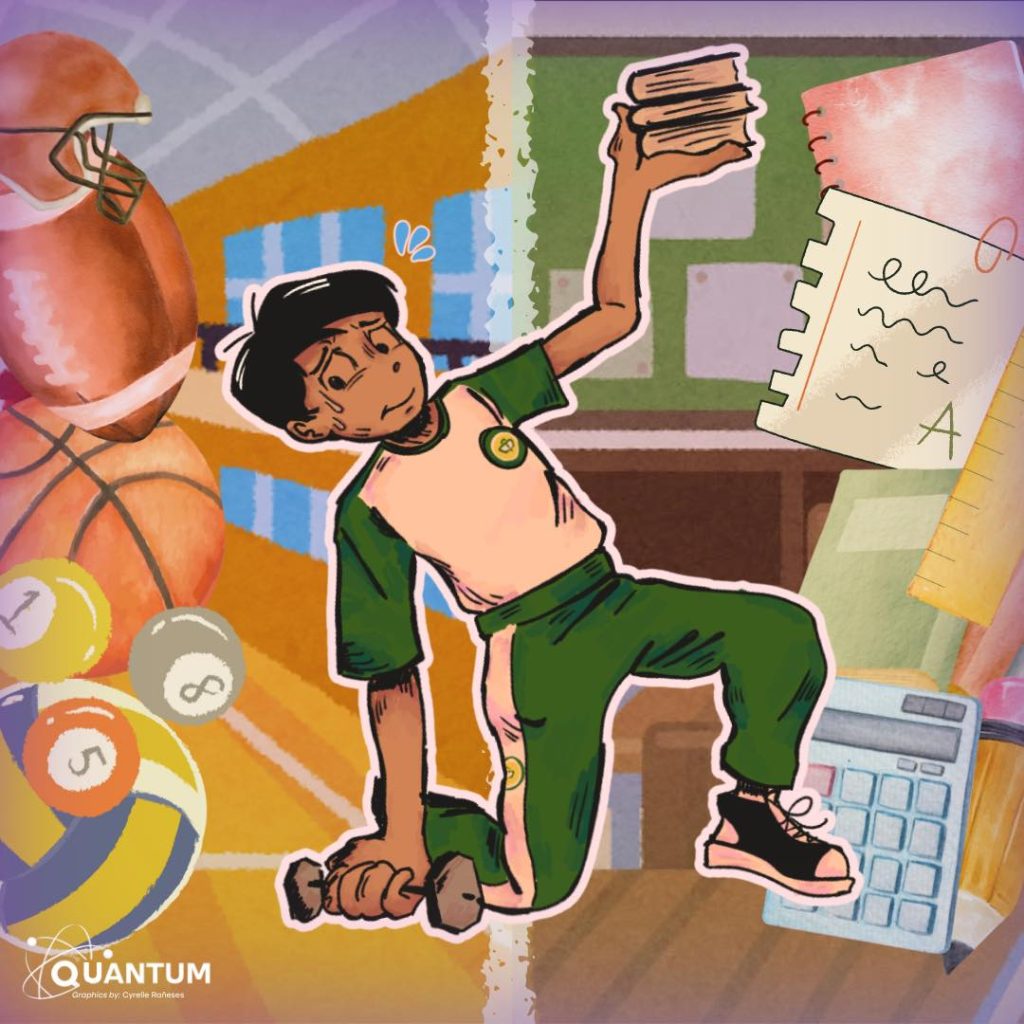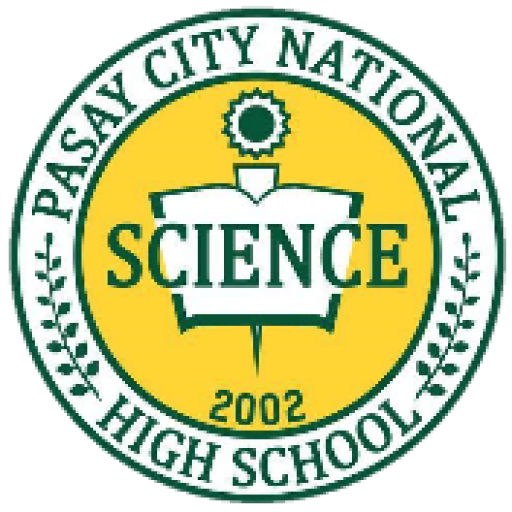By: Nikita Xyzelle B. Pariña
Graphics: Cyrelle Rañeses
Publication: Caitlin Mutas

To lift weights properly, you must balance the load evenly across both shoulders. This principle is often taught to weightlifters raising a barbell—each shoulder must bear equal force, creating harmony to prevent injury. This concept of balance extends to real-life situations: neglecting one aspect of life to focus solely on another can lead to a breakdown in performance. If we fixate on one responsibility, ignoring others, the weight we’re trying to lift can become unbearably heavy, preventing true success.
For example, in a science high school setting, students are known for their academic strengths. However, when it comes to sports, these schools often struggle in competitions with other institutions. This imbalance suggests a need for greater focus on physical education to ensure students develop both physically and mentally.
Balancing physical and academic education is indeed challenging in a science high school, where most resources and energy are devoted to Science, English, and Math. Unfortunately, this often leaves physical education—and the sports opportunities it brings—underemphasized.
One factor contributing to this imbalance is the insufficient resources available for sports equipment in the campus. For instance, athletes were unprepared during the Division Palaro 2023-2024 due to difficulties with resources and time.
“During the last school year’s Division Palaro, we only had a month to practice on campus. While in the situation, we really struggled,” said Jedrick Palonpon, a senior high school student. “We only had one trainer, our equipment was lacking, and if it wasn’t lacking, it was broken. Then when we entered the competition, we were really surprised since the standard game setting we had wasn’t applicable for the contest.”
This lack of equipment available also affects the number of student-athletes who can represent the school competitively.
“For me, if physical education continues to be neglected, athletes may struggle with motivation, experience burnout, and see declines in their academic performance. They may also face challenges transitioning into sports careers,” shared Kaeley Dio, a student-athlete. “No matter how academically focused a school is, physical education is essential. It helps balance the mind and body, enabling students to reach their full potential.”
This situation is concerning. The academic emphasis without an equal focus on physical education limits students’ abilities, reduces the pool of athletes competing, and impacts the institution’s performance in sports competitions.
To balance the weight properly, schools must prioritize both mental and physical education. Teachers can support this by encouraging active participation, organizing diverse sports activities, and promoting physical education as a core part of the curriculum. In addition, balancing academic and physical education within the schedule would enable students to grow both mentally and physically.
The balanced force. Through this, students are capable of showcasing their skills physically and mentally. In fact, we know that to achieve true growth, we must strive for equilibrium in both skills. In assessing this situation, a problem with regards to us personally, academically, and in general conditions could have various advantages when taken into consideration.
Lastly, students are not only here to learn mentally, but to improve physically. Physical education must be prioritized, balancing capabilities should be analyzed.



